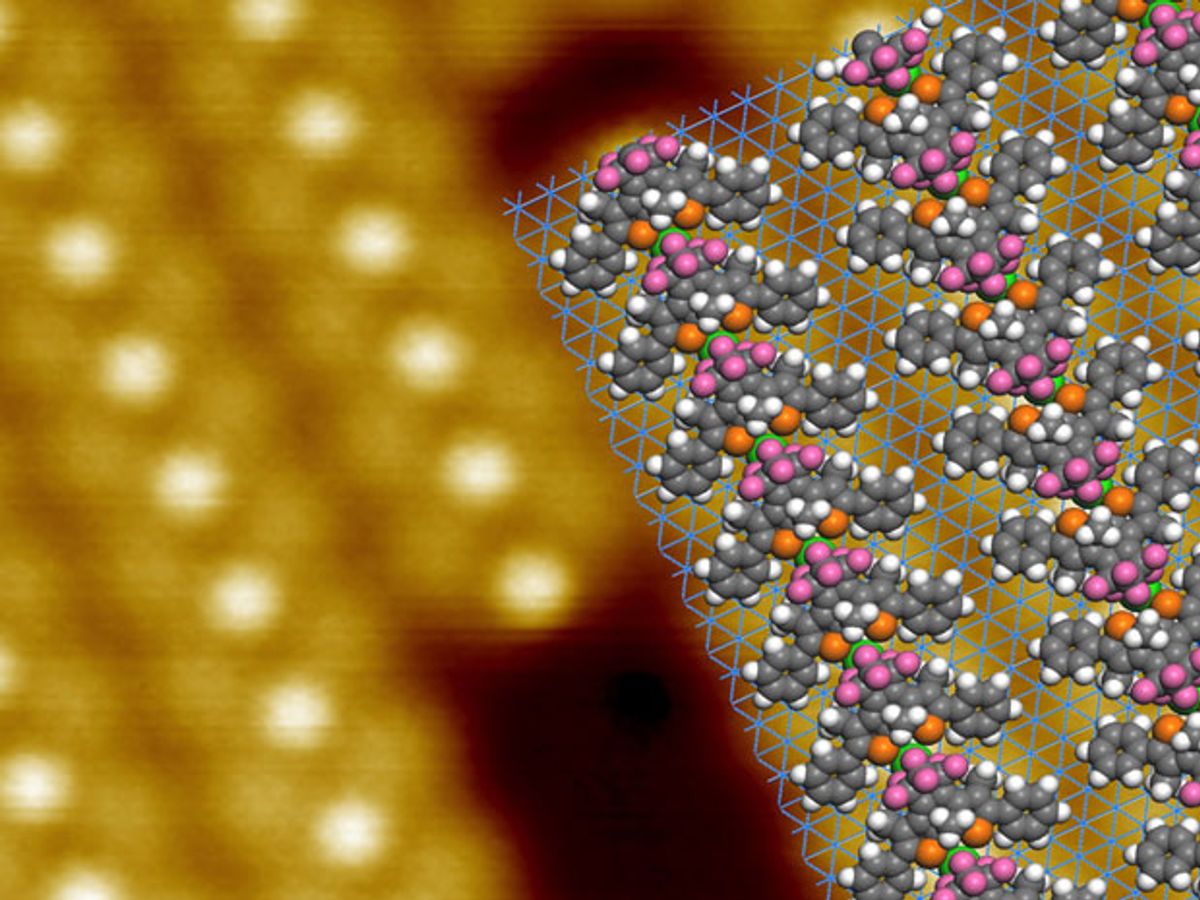Researchers at RIKEN in Japan have developed a self-assembly method for creating well-ordered molecular structures that could eventually lead to the scalable production of organic optoelectronic devices such as optical memory.
Previous research has indicated that organic molecules can reversibly change their state in response to pulses of light—a quality that would be useful for storing digital ones and zeros in a different form. However, for it to work in an optoelectroic device, the molecules have to be arranged into highly ordered, single-molecule layers that are bonded to a metal surface. This bonding is where the problems begin. Once bonded, the optical properties of the molecules are altered so that getting the desired optoelectronic properties becomes difficult.
In research that was published in the journal Angewandte Chemie, the RIKEN team used interactions between electric dipoles (objects with a positive pole and a negative one) of molecules and alkali metal ions to create a homogeneous monolayer of diarylethene molecules on a copper surface.
In general, the property that the diarylethene molecules have that is useful in optoelectronics is that they are photochromic, which allows them to change color reversibly when irradiated with light. But what distinguishes the diarylethene molecules the RIKEN researchers created is that they also have electric dipoles. This means the molecules can self-assemble on the copper substrate and maintain their attractive photochromic properties.
“With homogeneous and close placing of individual molecules on a solid surface, we might be able to develop a memory device with several hundred to a thousand times the density achievable using current technology,” said Tomoko Shimizu, one of the lead researchers, in a press release. “We now want to study ways to achieve on–off switching of individual molecules in the superstructure in a controlled manner.”
This is pretty early stage research, especially when measured against the immense competition to develop optical memory technologies. But when you see terms like “scalable production”, you have to consider the long-term potential of the technology.
Dexter Johnson is a contributing editor at IEEE Spectrum, with a focus on nanotechnology.



